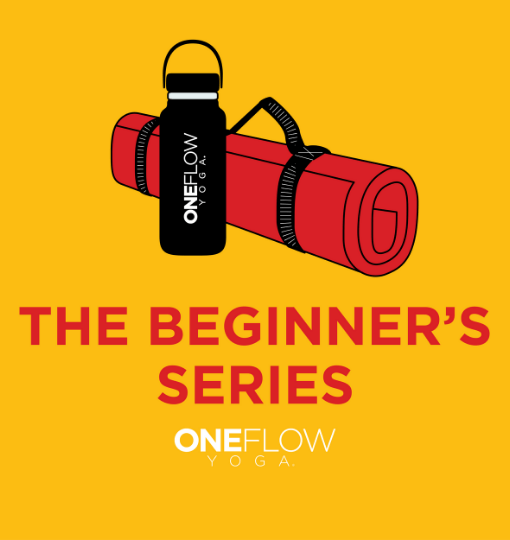I was a runner for twenty-five years, was on competitive cross country and track teams and I have taught yoga since 2005. But it took me a long time to combine the two and ask the question, is yoga good for runners?
Yoga provides numerous benefits to runners, including aiding in recovery and helping to prevent the most common running injuries. In addition, yoga can help make you a better runner through breath, body, and mental awareness. And yoga can balance your body and teach you how to relax.
Consider this an introduction to yoga specifically for runners from the perspective of someone deeply immersed in both disciplines. I’ll help separate what’s helpful and not and show you how to get the most out of yoga as a runner.
If you’re in a hurry, you can skip to the benefits of yoga for runners or 10 yoga poses for runners, complete with photos, down below.
While I’ll mention elite runners, I write this to serve the average runner.
| Total Number Americans Running | 50 Million |
| Most Popular Race | 5K |
| Average Age | 40 |
| Miles per Week | 21 |
| Why They Run | Fitness |
| Weekly Hours Spent Running | 4+ |
| Total Number Americans Practicing Yoga | 55 Million* |
| Most Popular Form | Vinyasa Yoga |
| Average Age | 40 |
| Why They Practice | Health & Fitness |
| Weekly Hours Spent on Yoga | 3-4 |
The average runner runs for fitness, is around 40, and clocks about 4+ hours per week. This mirrors the average yoga practitioner who focuses on health & fitness, is around 40, and practices 3-4 hours per week, depending on class length.
It should be no surprise then that 15% of yoga practitioners also run.
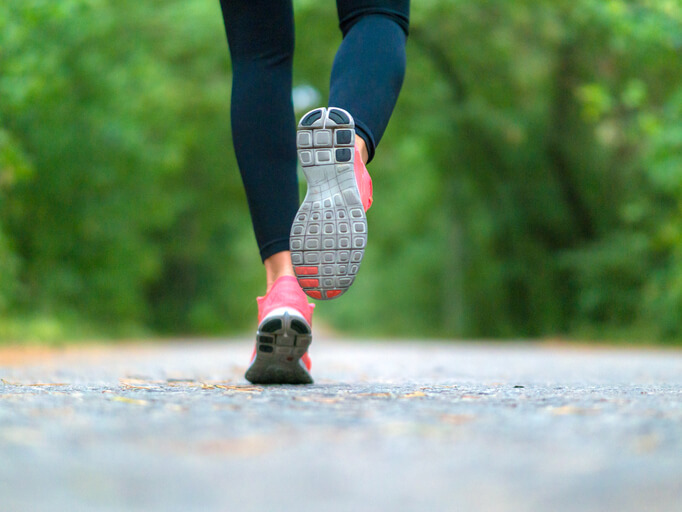
Is Yoga Good For Runners?
There are multiple ideas contained in the question of yoga being good for runners.
- Is it a good idea to both run and practice yoga?
- Will yoga make me a better runner?
- What are the benefits of yoga for runners?
- How does yoga keep runners healthy & free of injury?
Throughout this guide, I’ll delve into why yoga is a great companion for running and specific parts of a yoga practice to focus on to become a better, healthier runner.
Is it a good idea to both run and practice yoga?
As mentioned above, about 1 in 7 yoga practitioners are also runners. So clearly, they believe that yoga provides a benefit, if merely by their sheer numbers.
From my experience, running is infinitely more enjoyable with a regular yoga practice.
I ran for twenty-five years, and for the first fifteen, I was a traditional runner. I put in miles about 4-5 times a week, primarily for fitness and to feel good. When I competed, I upped my mileage, was conscious of my nutrition, and wore a bulky first-generation heart rate monitor to avoid “junk miles.” Ouch.
What can I say? I love running.
However, looking back, I realize I could have done things differently that would have made running more fun from the start.
That’s where yoga comes in.
For a decade, I both ran and practiced yoga, often on the same day. And something remarkable happened. My running became almost effortless. That may sound like hyperbole, but yoga taught me how to relax my body, so running felt easier.
Through yoga, I learned to breathe, which blew my mind because none of my coaches ever brought it up.
One more thing–I became a better runner.
The Science of Mixing Running and Yoga
Your results will vary, but my experience of combining running and yoga has been very positive. The science also backs this up. Despite all of the claims about yoga as a flexibility practice, which it is, it’s primarily a strength-based practice.
Some will worry about mixing strength training, yoga, and aerobic exercise, running, on the same day. The concern is that doing so:
“…blunts the endurance training response…[a] phenomenon, known as “muscular interference.“
Gretchen Reynolds, New York Times
In that article, Gretchen cites a few studies, including one in The Journal of Applied Physiology that says, “We saw no indications of interference.”
The bottom line is you can feel good about mixing running and yoga, even on the same day.
Running Guru Jim Fixx and Modern Yoga
Modern yoga wouldn’t exist without running. While both pre-date the Battle of Marathon, it was Jim Fixx’s best-selling, The Complete Book of Running, in the 1970s that helped kick off the fitness revolution in the U.S.
Jim’s book begins by focusing on “feeling better physically,” “what happens to your mind,” and living longer–all attributes yoga addresses.
While Jim thought running “may be the best” exercise, like all forms, it has some challenges that make yoga an excellent complement.
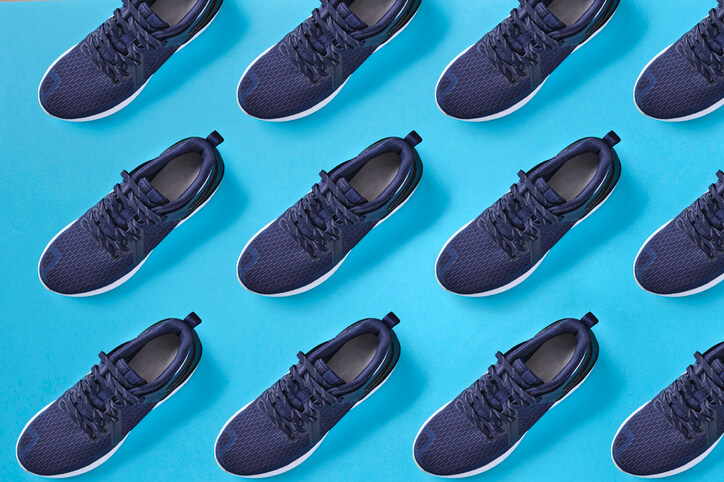
Running Is Repetitive
Though your runs may feature ever-changing scenery, your body is doing the same thing over and over again mechanically–putting one foot in front of the other.
An average professional marathon runner, for instance, might take 25,000 steps, while an average runner needs 30,000-50,000. (The formula to figure it out is 1661220 inches in a marathon divided by your stride length.)
Whatever it is, it’s a lot.
The high number of repetitions is relevant because they increase the likelihood of injury.
Yoga for Running Injury Prevention
Intuitively that makes sense. A car with 200,000 miles on it is more prone to breakdown compared to one with only 50,000. But what if you took care of the high mileage vehicle and drove the other car fast and furious all the time. Now which one is more likely to fail?
I bring this up because there is a lot you can do to prevent running injuries. How often you run is only part of the reason you might get injured. How you run and what else you do to support your running are more important, like adding yoga.
Running injuries focus heavily on legs, including the knees, IT band, shins, calves, hamstrings, and feet. Knowing this, you can adopt a preventative strategy and prepare your body for running by doing strength and mobility exercises. If this is your goal, choose a type of yoga with these components. (See Best Yoga For Runners below)
If you are interested in how yoga prevents injuries, you can read this article I wrote on it.
Think of yoga as a way to balance your body. It strengthens areas neglected by running, like your upper body, and provides variable movement to counteract running’s repetition.
Benefits of Yoga For Runners
Instead of repackaging the entire litany of yoga’s benefits, which you can read about here, I find it more helpful to tailor the benefits of yoga for runners.
That is, what yoga benefits are going to impact your running most.
- Yoga Teaches Runners to Breath Better
- Yoga Teaches Relaxation: The Key to Running Effortlessly
- Yoga Teaches How to Be with Discomfort

Yoga Teaches Runners to Breathe Better
Yoga is considered a breath-centered practice.
While breathing is currently a hot topic and the subject of much debate for the last 50 years, yoga has been working on breathing techniques for a few thousand years.
Granted, yogins weren’t trying to achieve a PR in the mile, but their work was incorporated into the modern yoga practice, and that serves us all.
Ujjayi breathing is arguably the best-known yogic breath. Here is what it can teach you as a runner.
- You can learn to control your breath.
- Breathe in and out through your nose.
- Slow down your breathing and make it rhythmic.
- Coordinate your breath and movement.
Breath is often an afterthought in both running and everyday life. But changing the way you breathe can make birthing easier, reduce the effects of stress and anxiety and yes, make you a better runner.
Here is the missing piece in breathing that gets overlooked even by yoga practitioners: Relax into the breath.
That takes time to feel, but what it looks like is letting your breath be integral to your experience of movement. Instead of feeling like the breath is layered on the movement, it feels like the breath is propelling you forward.
Far from being woo-woo, learning to do this is possible.
Breath Exercise for Runners
Try this simple exercise. You’ll need some way to time yourself, like using your phone.
1 For 1 minute, breathe as you usually do and notice how it feels.
2 For the next minute, breathe in through your nose and out through your nose only, counting down 5-4-3-2-1 for each breath. Notice how it feels.
Next, try the same exercise under stress. Bend your knees and reach your arms out. We call this utkatasana, or what is commonly called “chair” pose.
3 Again, for 1 minute, try to breathe in your normal way and notice how it feels.
Now stand up and take a moment to recover.
4 Finally, bend your knees and reach your arms out once more. This time, try the Ujjayi Breath, breathing in through your nose and out through your nose slowly on a count of 5-4-3-2-1. Notice how it feels.
A characteristic of Ujjayi Breathing is that it relaxes you, even when you are doing strenuous work. That may not have been your initial response to the exercise if it was new to you, but this is what happens over time.
Develop Your Breath
Whether you are a runner or not, you probably have “respiratory weakness.” This simply means you haven’t trained your breath, and so it’s working harder than it needs to.
That may be surprising, but you can run a mile or two or five in the exact same time using an efficient breath or with labored breathing. The difference is in how it feels and how your body responds. When you strengthen your respiratory system, you feel more relaxed and can often run further and faster.
Yoga is breath training and can help you strengthen your breathing, aka respiratory muscles.
Ujjayi isn’t the only yogic breathing technique. Another helpful method is to vary the lengths of your breaths, specifically, exhaling for twice as long as you inhale.
Breathing this way, according to the New York Times Bestseller Breath, increases your carbon dioxide levels. “With that bonus carbon dioxide, we gain a higher aerobic capacity,” which is measured in VO2 max.
Contrast this to the way runners prefer to breathe, a 2:1 rhythm, which is an inhale for two steps and exhale for one.
How To Breathe As A Runner
Regular yoga will make you a better breather.
But how do you take it back to running?
First, most of the work is done in yoga. In as little as 30 days of practicing yoga, you’ll notice it’s easier to breathe when you run.
I don’t recommend Ujjayi Breathing when running; however, you might experiment with a 1:1 ratio of inhales to exhales. Unfortunately, there is no agreement on the best way to breathe while running. Still, it’s generally a good idea to take fuller breaths that are rhythmic.
Finally, keep trying to relax into the breath.
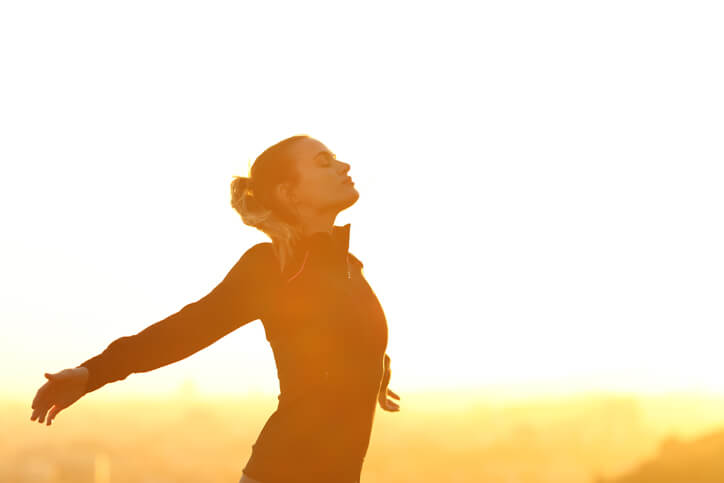
Yoga Teaches Relaxation: The Key to Running Effortlessly
To our Western mind, being relaxed means we’re on the couch scrolling through cat videos.
In the East, relaxation is power.
The opposite of relaxation is tension, and it’s a problem because it costs you metabolic energy. You literally burn calories to support the tension in your body through muscular contractions.
In yoga, we embrace the paradox that relaxation and tension coexist. Think of it as where you’re spending your energy. It’s helpful to put energy in your legs, but not in your hands and face?
Yoga teaches you how to be with the paradox because yoga practitioners learn to do difficult things, like balancing on one foot, or holding a warrior stance, while relaxing.
Contrast this to a typical runner’s approach, which is more about pushing. It’s easy to spot runners who first come to yoga because they generally try to force their way into yoga poses.
It’s a strategy that can succeed in running at first–go hard, go fast.
And it will work a short time in yoga–before it injures you.
Yoga A Balance of Tension and Relaxation
Pushing and using force can benefit some yoga poses, like holding a plank or a lunge.
But it will work against you in most other postures.
To the casual observer, yoga looks like you are doing a series of postures. The goal seems to be to get into as many yoga poses as you can.
But the yoga poses, or asanas, are simply a tool we use. They are the ball in soccer or the pieces in chess. It’s how we use them that makes it yoga.
Take the notion of flexibility. A familiar yoga pose is standing forward fold, uttanasana. Many people will try to grab their legs and pull themselves down as hard as they can. That may strengthen your arms, but it predisposes your back to injury and doesn’t do much for your hamstrings.
Instead, balance the tension, which is engaging your abdominals, quadriceps, and psoas to provide a stretch of your posterior chain, including your calves, hamstrings, glutes, and back.
Intelligently using tension can create strength and flexibility simultaneously. Therefore, this is a more effective way to practice yoga.
Yoga and Body Awareness for Runners
Working in this way also makes you more sensitive to what your body is doing, what we call body awareness.
As a runner, I use body awareness to tell me when I’ve adequately warmed up. For instance, I may be physically sweating, and my heart rate monitor may tell me I’m in the training zone. However, if my outer knee feels a little off, I’ll extend the warm-up or even take it easy that day.
So again, yoga teaches you another way to engage with tension. This spawns such phrases as “effortless effort” and “flow state.”
Breathing well relaxes you, and it’s one reason breath is so often brought up during yoga.
This is only one facet of relaxation, though. Another is how to relax when you’re uncomfortable.
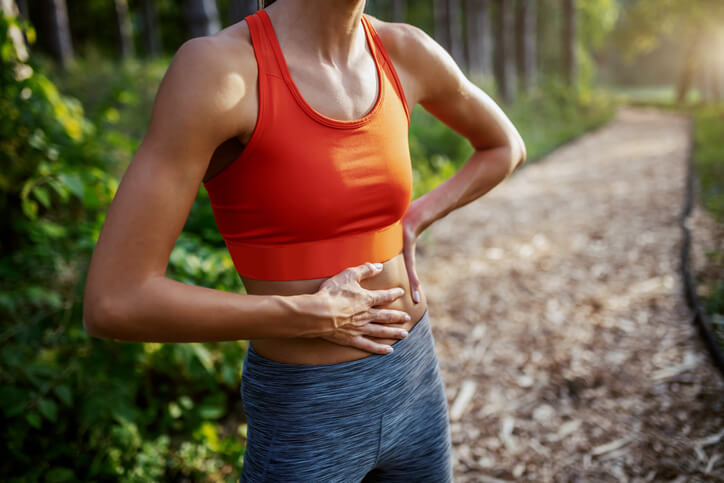
Yoga Teaches How To Be With Discomfort
Discomfort is another area where the Eastern and Western Minds diverge.
That is beginning to change, especially in areas around mental health and anxiety. However, there is still the prevailing view in society that we should try to avoid discomfort.
Yoga takes a different tack and actively embraces our uneasy feelings.
Runners know there are going to be some uncomfortable moments along the way. But, like their take on tension, many runners simply push through any unwanted sensations. They suck it up and go on.
But there is another, more effective way.
Yoga practitioners learn how to be comfortable with discomfort.
This is especially helpful for runners once you understand the concept behind it.
The Concept of Being with Discomfort
Point 1
The feeling of discomfort isn’t going to go away.
Point 2
But, you can get better at being with discomfort.
This first point recognizes that discomfort is part of reality. You’re never going to banish it altogether. In fact, it’s part of life. You eat breakfast, and you’re hungry by lunch. Discomfort is something that’s going to come up regularly. So let’s learn to be with it.
The second point says you can get more comfortable being uncomfortable. And as you do, you can be with even more discomfort, which means you can do amazing things in life.
The default strategy in yoga is to befriend discomfort. You get to know it like having a conversation with a confidant instead of ignoring it and pretending it doesn’t exist. You deal with the reality of discomfort.
If this sounds like mental gymnastics, it is. You can think of yoga as training your mind.
Yoga As Mental Training for Running
The differences that separate elite athletes from one another are primarily mental. It’s why the field of sports psychology exists.
The conversation you have with discomfort is really a conversation between you and your mind, which is why it’s such a powerful skill.
Many of our fears, worries, and doubts are remnants from long ago that just hang around. Often, they are no longer relevant.
Other concerns are things we have no control over but still expend enormous energy trying to.
However, there are things we can control. For example, we can relax when intense feelings come up and breathe in a slower, fuller manner. We can also discern between messages of discomfort. There are those rooted in the past and others that alert you to attend to something now.
In yoga, we learn this by watching our legs shake in a posture. We take the stance of the observer and watch how the feelings move within us and generate patterns of thinking. And we notice what intensifies sensations and what allows them to pass.
Being comfortable with discomfort gives you a more proactive way to work with stress, be it physical, mental or emotional.
The benefits of yoga for runners all work together. As you learn to breathe, it enhances your ability to relax. You can then take the skill of relaxation to work with discomfort. And all of these skills will make you a better runner.

Best Yoga For Runners
I pause here to disclose that I’m a full-time yoga teacher. It’s what I do for a living. I own a yoga studio, teach yoga teachers, and study yoga almost every day.
You can lean on my experience to navigate the types of yoga as they pertain to running.
Types of Running
- Trail
- Road
- Ultra Marathon
- Sprinter
The type of yoga you choose depends on:
The type of runner you are
The purpose for practicing yoga–recovery, strength, balance
If you are an average runner, you have more options because the type of yoga you do isn’t critical to your training. However, that’s not the case for elite runners.
Do elite runners do yoga?
Elite runners need bodies that are light and easy to propel forward. The name of the game in elite running is efficiency or economy of movement. Stiffness translates into economy for distance running.
McHugh, the director of research at the Lenox Hill Hospital Nicholas Institute of Sports Medicine and Athletic Trauma in Manhattan
Some elite runners do yoga, and they recommend practicing on your hard days to allow for adequate rest. This avoids working out on your days meant for recovery.
Being a runner at the upper echelon is a lifestyle. Ryan Hall, who holds the U.S. record in the half marathon with a sub 1 hour time, and put forth a 2:04:58 in the Boston Marathon, says this about his time outside running.
“But the rest of the day, to be honest, is not a lot of fun. My energy was super low. I took naps every day and felt pretty much useless when I wasn’t running.”
Since retiring from running, Hall has gone on to focus primarily on strength training.
The benefits of yoga for runners–working with breath, relaxation, and discomfort–may warrant including it in your training, even if you lose a few degrees of stiffness.
Yoga for Average Fitness Runners
For the rest of us, we can do just about any type of yoga we please. Let’s review a couple of the most popular yoga styles for runners and the pros and cons of each.
Hot Yoga and Ashtanga Yoga
Both hot yoga and ashtanga yoga share the distinction of being fixed sequences meaning the postures are the same every time.
Hot yoga is done in a room of around 105°F/40°C, and some runners are attracted to the heat because they believe it prepares them for temperature extremes while running.
Ashtanga yoga is another favorite, and like hot yoga, may be considered a more intense form of the practice. This can feel familiar to runners, who often run in extreme conditions, but it may make it more difficult to relax.
Also, the way the ashtanga sequences were designed is puzzling as many postures in the second series are more accessible than in the first or primary series. This is important because everyone starts with the primary.
Finally, the predictability of both ashtanga and hot yoga can be comforting. But for runners, this is swapping one repetitive motion for another. So it makes sense to explore something with more variation.

Power Yoga
Power yoga gives runners more postural options and is a variable sequence type. Variable sequence practices mean the postures change from class to class. Typically a power yoga teacher will build a flow and then take you through that flow repeatedly.
Power yoga is characteristically heart-pounding and energetic. If you are looking for an alternative to running, this can be a good initial step. However, power yoga is not great at building strength. And the repetitions of a sequence are often described as feeling like you are “going in circles.”
Quieter Types of Yoga
The quieter types of yoga meant for rest and relaxation are not as popular in the U.S. as the energetic methods. The same lack of interest tends to hold true for runners, who prefer more active yoga practices.
Under the quieter types are yin, restorative, and hatha. Hatha refers to all physical practices but is often taught as a slow and gentle class. These types of yoga may benefit runners looking more for recovery and relaxation.
Iyengar Yoga
Another less popular type of yoga is Iyengar, named after BKS Iyengar. It has fewer postures, done repeatedly. You’ll typically stay with the same posture type a week at a time, meaning you’ll be doing primarily backbends or forward bends, etc., during that period.
Iyengar teachers are very skilled in teaching the asanas. However, I wouldn’t recommend ashtanga to runners, who need to balance their bodies and learn to integrate breath and movement. Iyengar yoga separates the asana, physical practice from pranayama, breathing practice.
Vinyasa Yoga is the Best Yoga for Runners
As a vinyasa yoga teacher, I am biased. However, I spent years in the other practices. And I arrived at vinyasa because, when it’s taught well, it gives you an approach that is:
- Accessible
- Energetic
- Variable
- Breath-focused
- Strength-based
- Whole-body
Vinyasa classes run the gamut from being the most challenging to the most accessible form of yoga. The skill of the teacher matters significantly. This means you’ll want to try out a few.
Vinyasa yoga classes can help you build strength and take you through a range of motion called mobility work. Vinyasa helps balance your body and does this through asymmetrical poses that allow you to differentiate weaknesses.
Because it is less repetitious than power yoga, you see a greater variety of poses. And vinyasa has similar hold times to Iyengar to allow you to explore the posture in more depth.
But whether you have access to a skilled teacher or not, I’ll give you some helpful ways to get the most from your yoga practice.

Yoga For Runners: 10 Smart Tips
1 Warm-Up
Warming up in the context of yoga prepares you for the work you are about to do. As a teacher, I do this by offering more dynamic stretches at the beginning of class.
Warming up also denotes that the body is warm enough to benefit from the work. Just like running, start lightly before delving into progressively more challenging postures.
Also, don’t forget to cool down at the end of practice.
2 Focus on Engaging Your Muscles
In yoga, we say balance strength, and stretch. This means that you want it to be active every time you stretch, i.e., use strength. The opposite of active is passive, and the difference is in the feeling. Active stretches feel difficult because they are. Passive stretching feels like taffy being pulled.

Active stretching is essential to prevent injury, build strength, and increase access to your range of motion.
3 Stabilize and Work What You Regularly Use
In running, you need your glutes, hips, legs, and feet. So give them added attention by choosing to put a lot of effort there.
4 Repeat Postures For Depth
Repeating the same posture from a biomechanic point of view allows you an opportunity to work with it differently. The first time you do a pose in a class helps prepare your body for subsequent repetitions.
5 Connect Your Breath and Movement
Breathe in a way that it feels like the breath and movement are so connected that if you stopped the breath, you would stop the movement and vice-versa.
6 Relax into the Tension
As you are working hard by holding a posture, see if you can relax your eyes. This often is a signal to your body to relax. Then focus on slow, deep inhales and exhales. If you have difficulty relaxing, emphasize the exhale.
7 Value Slowing Down
Many runners practice yoga similar to how they run. But yoga offers another alternative–to slow down and be mindful. This helps create relaxation and body awareness. In addition, it shifts your nervous system from being in an excited state to one of calm and focus.
Going slow can help you rest and recover as a runner. But it only happens if you value slowing down.
8 Modify Postures
I’ll let you in on a secret, most modern yoga classes teach modifications of postures. I highlight this so you can give yourself permission to modify them even more. A best practice is to fit the yoga poses to your body, not the other way around. Two ways to do this are to use two blocks and to bend your knees.
Modifying poses lets, you do the work of the pose instead of fighting with your body. That reminds me.
9 Pay Attention to How You Move
Notice how you are practicing yoga. Are you spending most of your time struggling, which precludes relaxation? How is your self-talk, that is, how your inner voice speaks to you?
10 Give it Time
Learning to run well takes time. Learning to practice yoga is the same. A great running coach can let you make leaps. Likewise, a great yoga teacher can help progress your practice.
Bonus Tip: Have Fun.
Having fun is a part of the philosophy of yoga–because if it’s serious all the time, you’ll quit. Find a yoga you enjoy and do that.
How Often Should Runners Do Yoga?
Both running and yoga provide a way to stay in shape, stay healthy and relieve stress. And it is ok to run and practice yoga, even on your hard days.
So the decision on how often a runner should practice yoga is more about how much time do you have? When I was single, I ran and practiced yoga 3-4 times each week, but that changed after having kids.
If your time is limited, you might have to run a little less to add yoga in. But the benefits make it worthwhile.
And the order can make a difference too. The current advice is to run first and then practice yoga if you are doing it on the same day. The same holds true with stretching. Stretching before running can decrease performance.
Essential Yoga Equipment for Runners
You can read all about the equipment you need here. Hint, it’s a great mat. The average American runner buys 3 pairs of running shoes a year at $100 each. Yoga is going to seem cheap by comparison.
A great yoga mat that you’ll use for the rest of your life costs just over $100.
One other thing to add to your kit as a runner is a small blanket or beach towel. This can help you cushion your knees.
10 Yoga Poses for Runners
I curated these poses, especially for runners. They are accessible, even for the stiffest body types, provided you use tools like yoga blocks. You can easily modify them or intensify them.
Though I’ve shown the easiest way to get into them, you can get there from other postures, like downward-facing dog.
I teach the right side, but I assume you’ll do the left side too. In vinyasa yoga, we hold postures for 5 long breaths, about 45 seconds to a minute. You can hold legs up the wall pose for up to 15 minutes.
Many other yoga postures will benefit runners, such as warrior 1, 2, etc., and you can add to your repertoire as you progress.
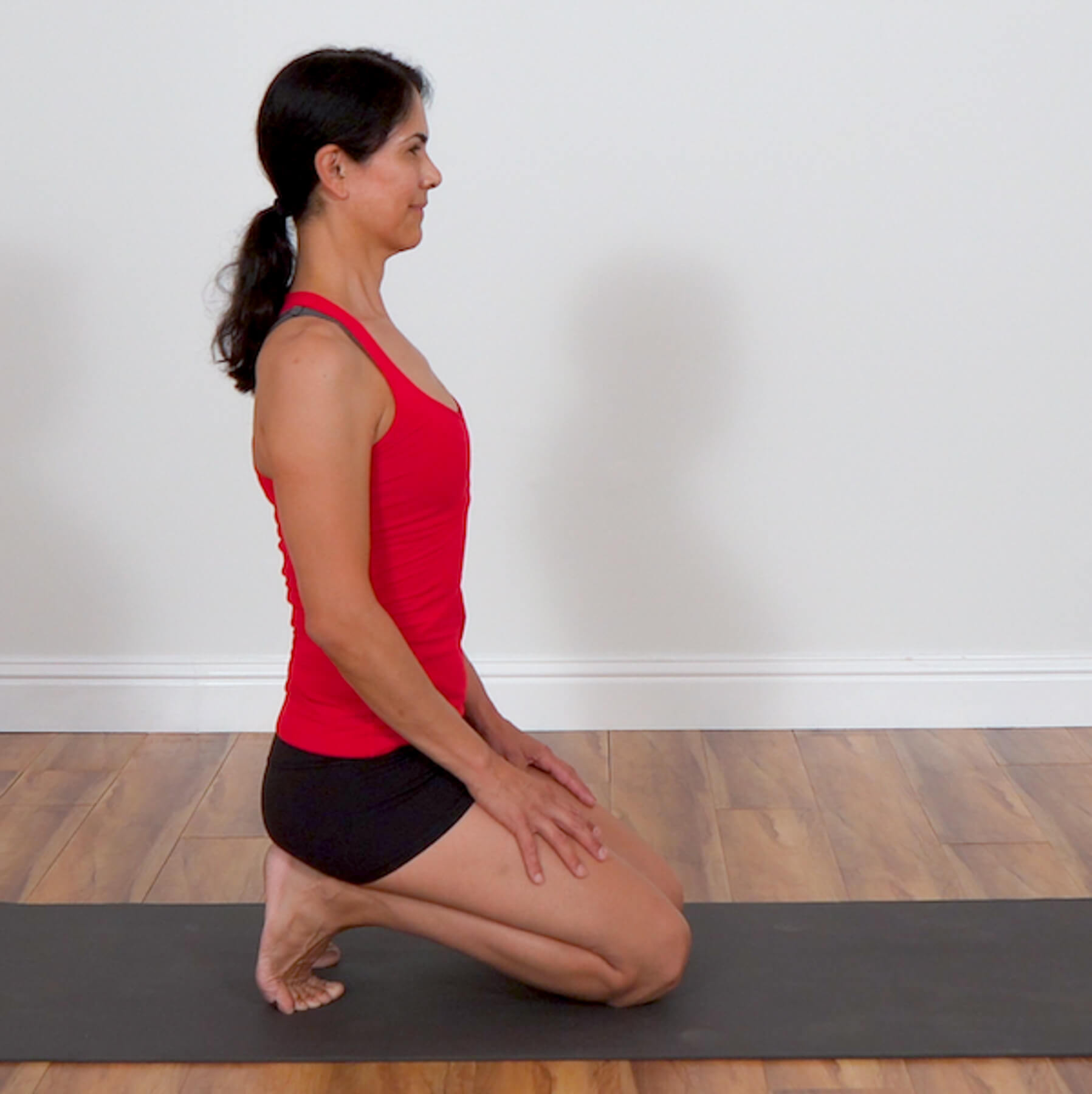
1 Toes Pose
How to Get In
Start on hands and knees. Tuck your toes under, sit your butt onto your heels, then slowly walk your hands to your thighs.
How It Helps Runners
Toes pose can help prevent plantar fasciitis and keep the feet flexible.
Keep in Mind
You can modify the intensity of toes pose by how close your hands are to you. If your hands are on the ground, there will be less weight (load) on your toes than if they rest on your thighs. You can also cushion your knees by placing a folded towel underneath or doubling over your mat. Actively press the toes down and engage the feet.
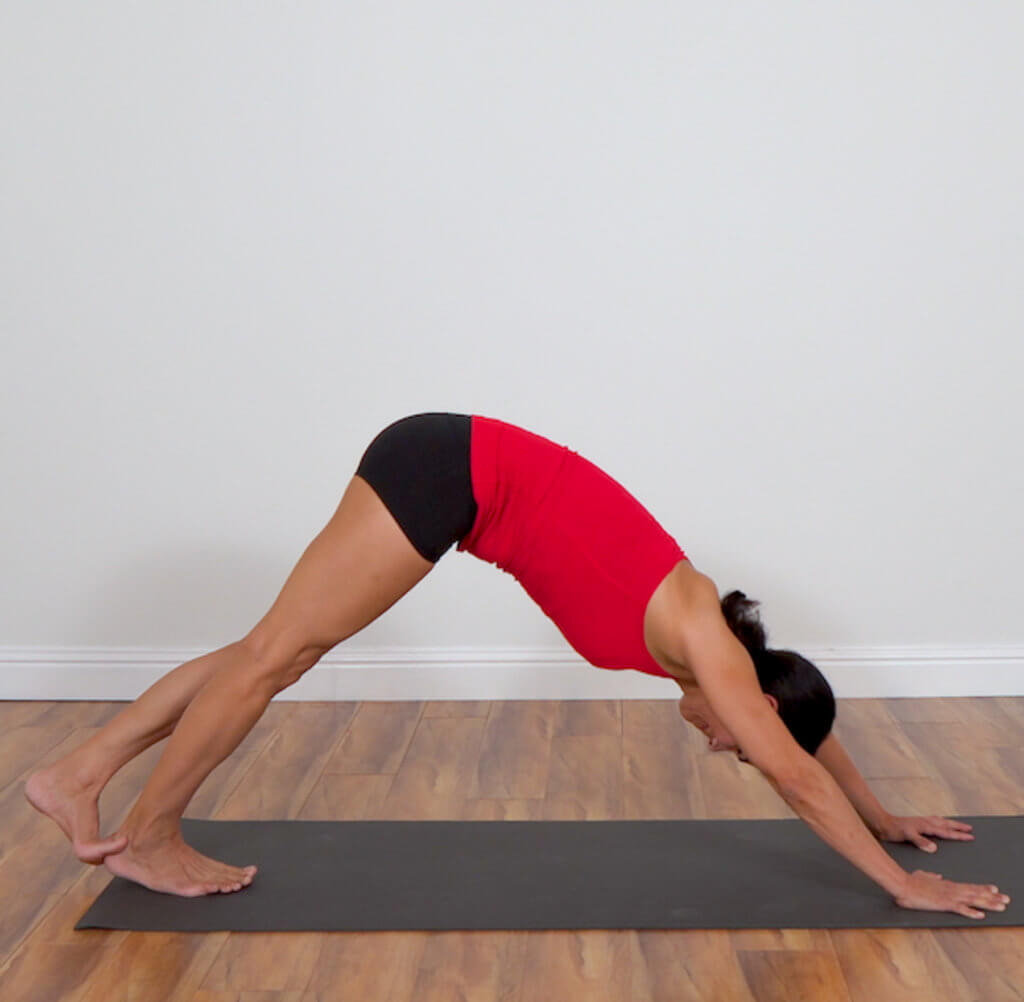
2 Downward facing dog foot on the back of heel
How to Get In
Start on hands and knees. Your hands are shoulder-width apart and your feet hip-width apart. Tuck your toes under, then lift your butt up and back while straightening your legs.
How It Helps Runners
Downward facing dog can strengthen and stretch your legs and build shoulder strength.
Keep In Mind
To get more upper body stretch, you can bend your knees. To focus more on legs, lift your toes and knees and actively press your heels down and back.
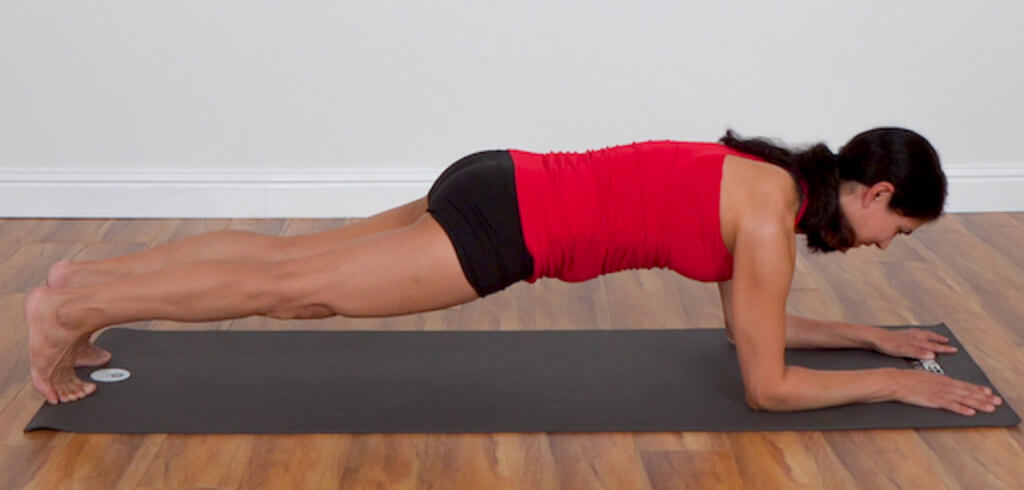
3 Forearm Plank
How to Get In
From hands and knees, lower down to your forearms, then tuck your toes under and step your feet to the back of the mat.
How It Helps Runners
This is a great pose to strengthen your shoulders, upper body, butt, core, and legs.
Keep In Mind
Avoid lifting your butt or drooping your belly. Modify it by stepping your feet back then lowering your knees so they are well behind your hips. Activate your core muscles by trying to drag your feet and hands toward each other. Activate the shoulders by trying to squeeze your elbows in.
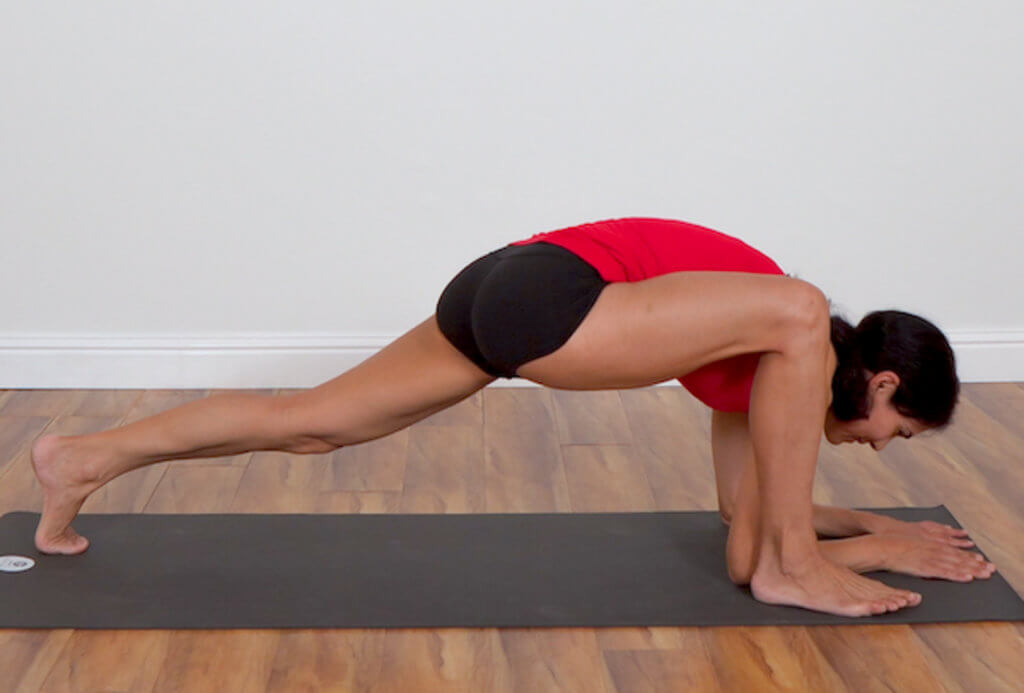
4 Lizard
How to Get In
From hands and knees, step your right foot outside your right hand. Tuck your left toes under, step back while lifting your left knee off the mat. Try to straighten your back leg. Lower down to your forearms.
How It Helps Runners
This “hip opener” targets your hip flexor muscles.
Keep in Mind
Modify lizard by lowering your back knee, which takes a lot of the weight and intensity out of it. You can also put your forearms on blocks or stay on your hands. Increase your back leg work by first lowering down to your forearms, then lifting the back leg. It changes the pose. Be sure to engage your glutes.
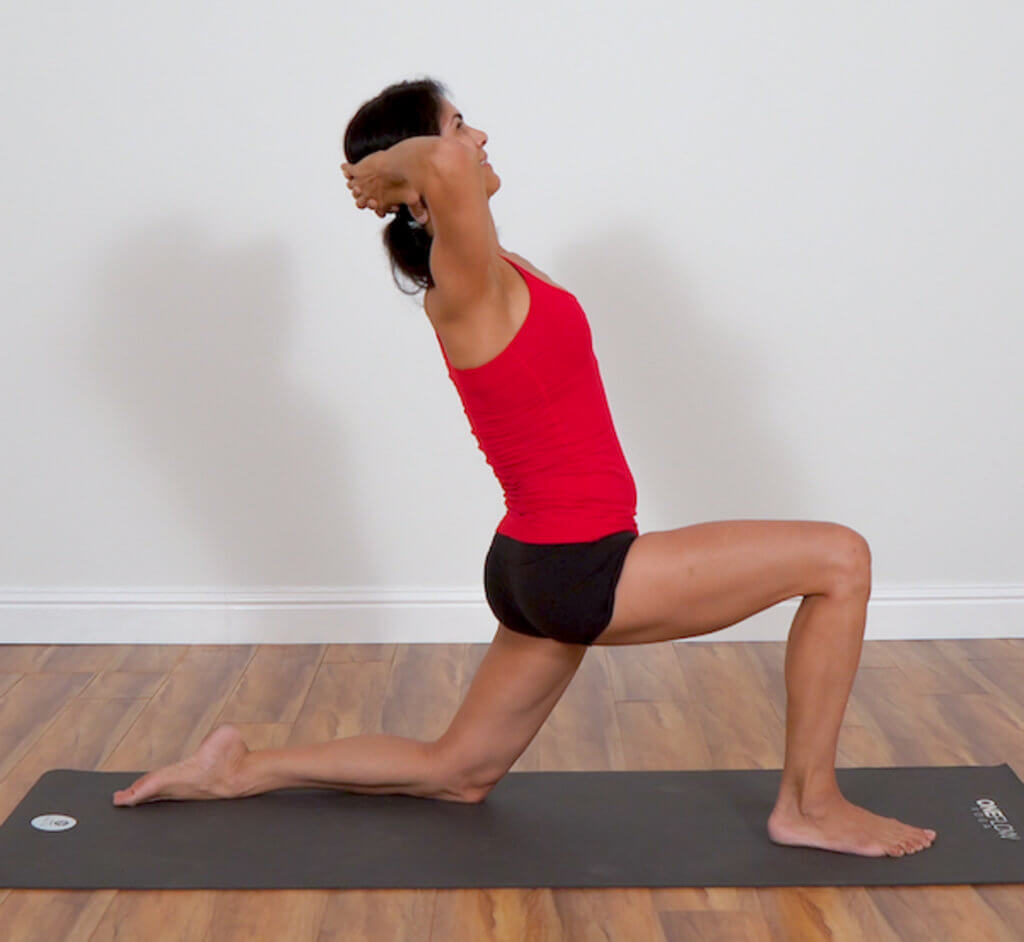
5 Low Lunge (anjaneyasana)
How to Get In
From hands and knees, place the right foot between the hands in line with your right hip. Tuck the left toes and step the left foot back. Lower the left knee. Place your hands on your front thigh to help lift your shoulders over your hips. Next, place your hands behind your head and lift the center of your chest up.
How It Helps Runners
This targets hip flexors and is a back strengthening exercise.
Keep In Mind
To modify, you can keep your hands on your thigh. Look wherever is comfortable for your neck. Your hands are there to support your head. IThe whole pose feels like it’s a lifting sensation instead of a sinking feeling.
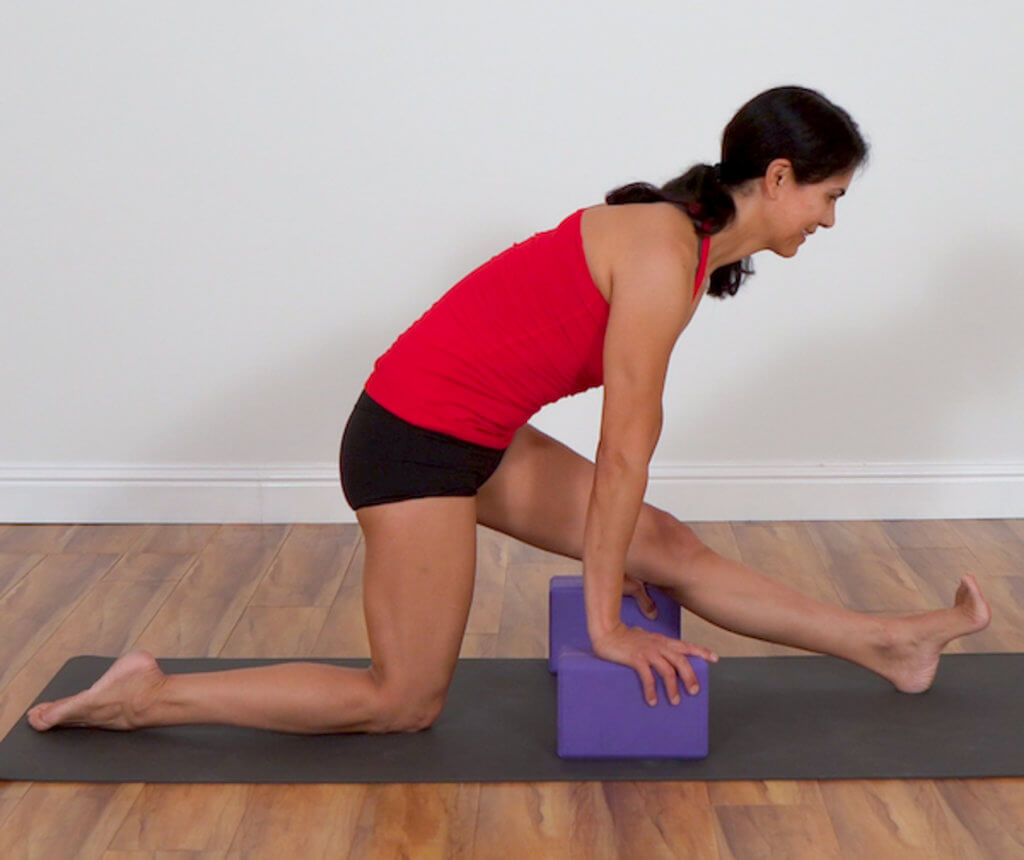
6 Half Split
How to Get In
From hands and knees, step your right foot forward, in line with your right hip. Slowly begin to slide your front foot forward while lifting your toes toward your shin and straightening your front leg. You can also slide your back leg back a little. Keep your butt over your back knee.
How It Helps Runners
Half split is great at stretching out the hamstrings and calves and toning the thighs and shins.
Keep In Mind
Modify by keeping a slight bend in your front leg or by using blocks under your hands. The more engaged your whole leg feels, the greater the benefit and the safer you’ll be. To activate the front of the leg, try to touch your toes to your shin and lift the kneecap. To activate the back of the leg, drag the front heel backward and reach forward with the ball of the foot.
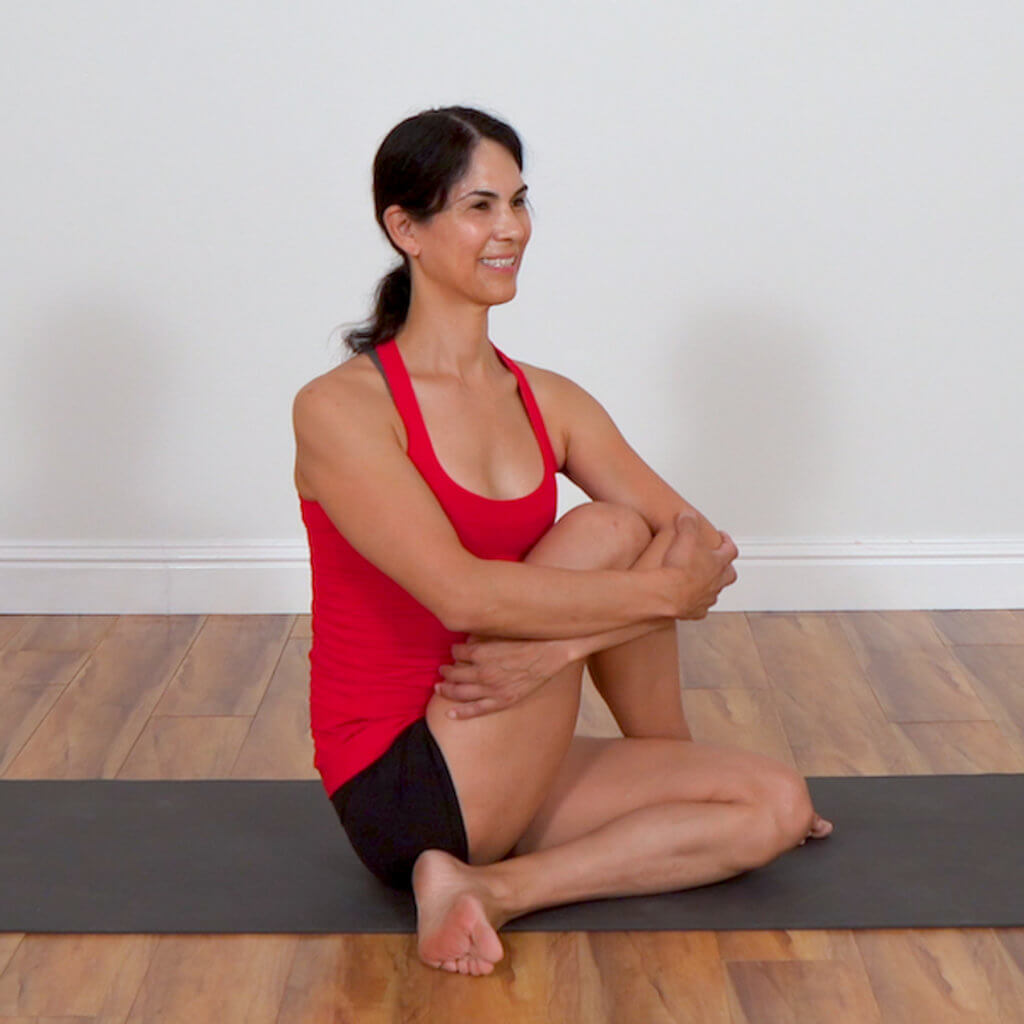
7 Half Lord of the Fishes modified
How to Get In
From a seated position, extend both of your legs forward. Bend your right knee and cross your right foot outside your left thigh. Lean-to the left to bend your left knee and place it outside your right hip. Wrap your left arm around your front leg, then your right arm around your left arm.
How It Helps Runners
This familiar posture has been adjusted to stretch the deep hip muscles and glutes.
Keep In Mind
This version of the pose is not a twist. Modify by keeping the left leg straight if the right knee is bent. Keep both sit bones on the ground.
Focus on leaning slightly forward toward the right front corner of your mat. You can imagine where your leg connects to your pelvis as a circle and make small circular actions with your hip to change the sensation. Have the arms pull the bent leg towards you, and the leg resist to create more engagement.
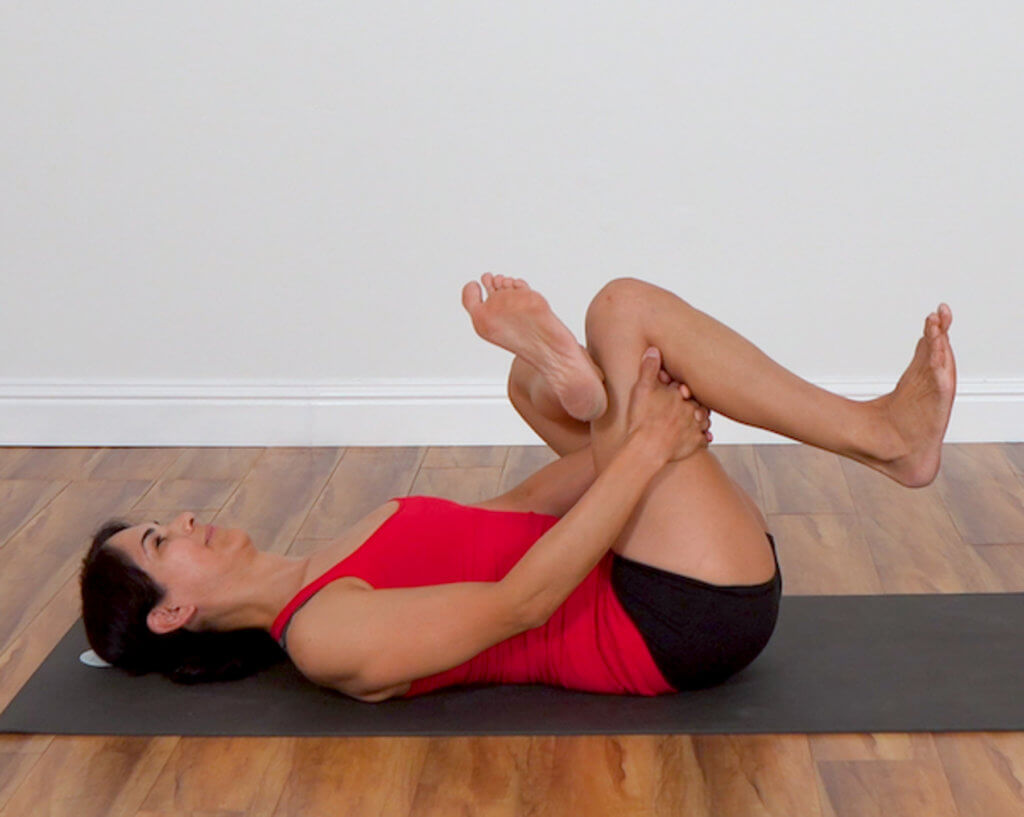
8 Reclining Pigeon
How to Get In
Lie on your back. Bend your knees and place your feet hip-width apart on the ground. Lift and place your left ankle on your right thigh. Reach your left hand through the middle of your legs and reach your right hand around your right leg. Lift your right leg toward you and interlace your fingers behind your right hamstring.
How It Helps Runners
This targets the hamstrings.
Keep In Mind
Modify by keeping the foot on the ground. You can also change your hand position and put your hands in front of the shin for more intensity. This pose is meant to be felt in the hamstrings and hips, not the knee. Be sure to keep the crossed-over foot actively flexed toward the shin.
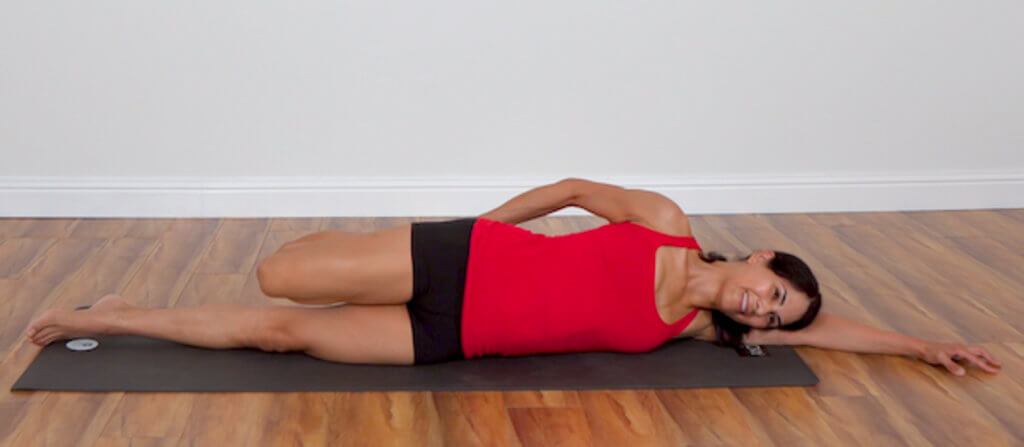
9 Heel to Butt
How to Get In
Lie on your back. Reach your right hand behind you. Roll onto your right side, using your right arm as a pillow for your head. Bend your left knee and reach down with your left hand to grasp your left ankle or foot.
How It Helps Runners
This pose stretches your hip flexors and your quadriceps.
Keep In Mind
To make it easier to reach your foot, you may have to start with your knee more toward your chest then gently take it behind you. Keep your bent knee level with your hip. To intensify, slowly take your bent leg back behind you. Be sure to press your foot/ankle into your hand and engage your glutes. This will increase the stretch in the quads and hip flexors.
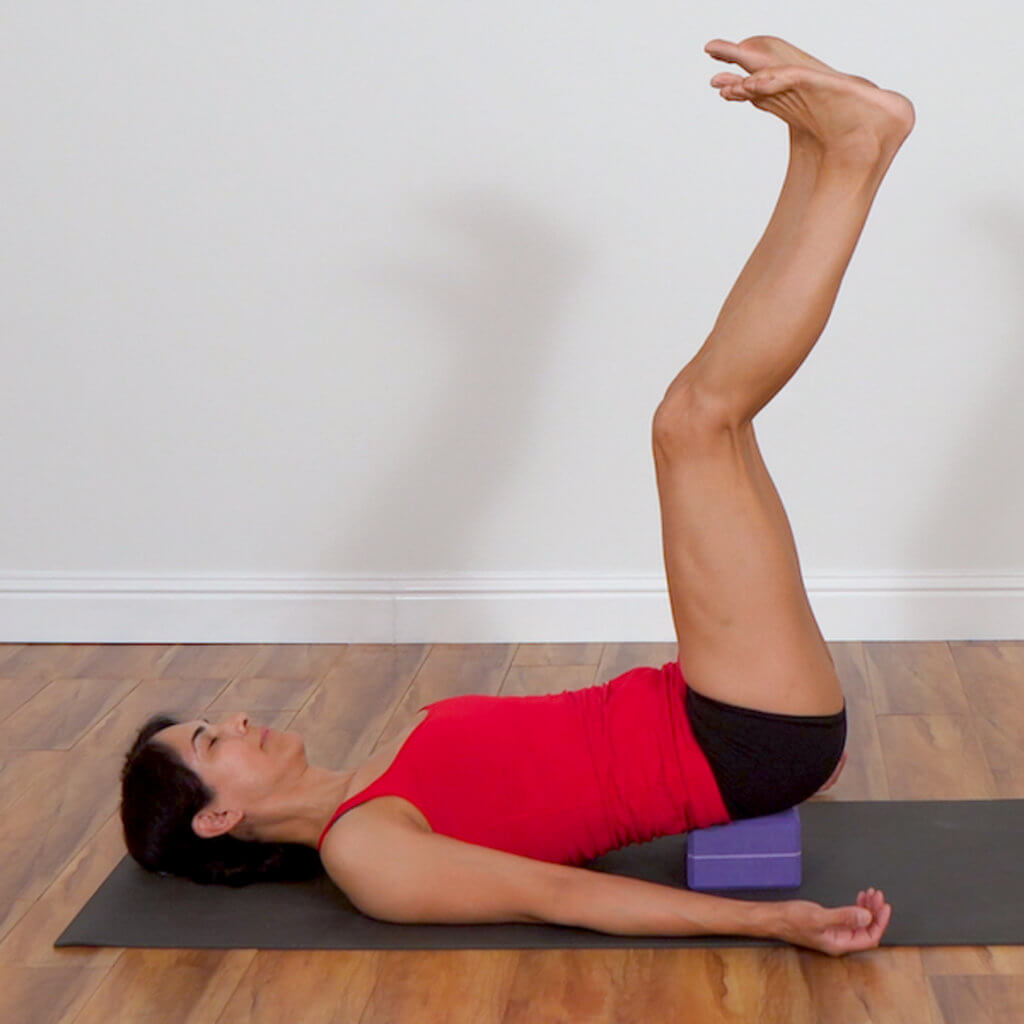
10 Legs Up The Wall
How to Get In
Lie on your side with your butt against a wall. With your knees bent, roll onto your back and place your feet on the wall in a comfortable way. You can also do this in the middle of the room by lying on your back, bending your knees, and putting your feet on the floor. Next, lift your hips, place a block underneath your butt for support, and lift your legs in the air.
How It Helps Runners
This pose relaxes you and helps to recharge fatigued leg muscles.
Keep In Mind
You can vary the distance of your butt to the wall depending on your flexibility. You can also bring your feet together and widen your knees. Legs up the wall is considered an inversion, so you want to come out slowly and lie on your side for a few breaths before rising back up.

